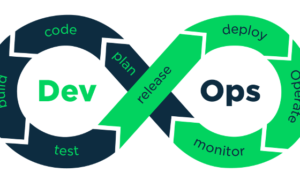Welcome to the ultimate showdown of wits, creativity, and linguistic prowess! In one corner, we have the brilliant minds of humanity who have been penning timeless classics for centuries. And in the other corner, we have the rising star of artificial intelligence, armed with algorithms and machine learning capabilities. It’s a battle for literary supremacy like no other: Human vs. AI: Who Writes Better? Join us as we delve into this mind-boggling competition to uncover whether flesh-and-blood authors still hold sway over their silicon counterparts or if machines are poised to revolutionize the world of storytelling forever.
Introduction to Human vs. AI Writing
In today’s fast-paced digital world, we are witnessing the rise of artificial intelligence (AI) in almost every aspect of our lives. From self-driving cars to virtual personal assistants, AI technology has become an integral part of our daily routines. And now, it is also making its way into the realm of writing.
Traditionally, writing was considered a skill that only humans could possess. However, with advancements in AI technology and natural language processing (NLP), machines are now able to generate human-like text and even entire articles. This has sparked a debate among writers and content creators: who writes better, humans or AI?
The Rise of Artificial Intelligence in Writing
Artificial intelligence (AI) has been making significant advancements in various fields, including writing. With the development of natural language processing (NLP) technologies, AI is now capable of generating content that closely resembles human writing. This rise of AI in writing has sparked a debate about whether machines can surpass humans in creating quality written content.
One of the main reasons for the rise of AI in writing is its ability to analyze and process vast amounts of data at an incredibly fast pace. This allows AI algorithms to learn from large datasets and mimic human writing styles and patterns. Moreover, with advancements in machine learning, AI systems can continuously improve their performance by adapting to new information.
AI-powered tools such as text generators, chatbots, and language translation software have become increasingly popular among businesses and individuals looking for efficient ways to create written content. These tools use algorithms trained on large datasets to generate articles, reports, product descriptions, and even entire books.
One major advantage of using AI-powered tools for writing is their speed and efficiency. While it may take a human writer hours or days to produce high-quality content, an AI tool can do it within minutes. This not only saves time but also reduces costs for businesses that rely heavily on written communication with their customers.
Another benefit of using AI in writing is its consistency. Humans are prone to making errors or inconsistencies in their writing due to fatigue or oversight. However, an AI system can generate consistent content without any mistakes once it has been trained on appropriate data sets.
Advantages and Limitations of Human Writing
1. Creativity and Originality: One of the major advantages of human writing is the ability to think creatively and come up with original ideas. Unlike AI, humans have emotions, experiences, and unique perspectives that allow them to write in a way that resonates with readers on a deeper level.
2. Adaptability and Flexibility: Humans are capable of adapting their writing style according to the target audience or purpose of the content. They can also incorporate new information or make changes in their writing based on feedback, making it more personalized and effective.
3. Emotional Connection: Human writing has the power to evoke emotions and connect with readers on an emotional level. This can be achieved through personal anecdotes, storytelling, or using language that evokes certain feelings.
4. Cultural Relevance: With diverse backgrounds and cultural influences, humans can bring a unique perspective to their writing that is relevant for different audiences. This allows for a wider reach and impact compared to AI-generated content, which may lack cultural sensitivity.
5. Critical Thinking: Writing involves critical thinking skills such as analyzing information, evaluating sources, and presenting arguments effectively. These are all essential elements for creating high-quality content that engages readers.
Limitations of Human Writing:
1. Subjectivity: One of the biggest limitations of human writing is its subjectivity. Each writer has their own biases, beliefs, and opinions, which can influence the way they present information in their writing. This may lead to biased or one-sided content.
2. Time and effort: Writing can be a time-consuming and laborious process, especially for longer pieces of content. It requires a lot of effort to research, organize ideas, and refine the writing to make it effective and engaging.
3. Cost: Hiring human writers can be expensive, especially for businesses that require a large amount of content on a regular basis. This can be a barrier for smaller businesses or individuals who may not have the budget to afford professional writers.
4. Limited Scope: Human writers are limited by their knowledge and experiences. They may not have expertise in certain topics or industries, which can limit the scope of their writing.
5. Inconsistency: Human writing is prone to inconsistencies in tone, style, and quality, as each writer has their own unique way of writing. This can be problematic for brands or businesses trying to maintain a consistent voice and message across all their content.
Advantages and Limitations of AI Writing
1. Speed and Efficiency:
One of the biggest advantages of AI writing is its speed and efficiency. With advanced algorithms and machine learning, AI can generate content at a much faster rate than humans. This makes it ideal for tasks that require a large volume of content to be produced in a short amount of time.
2. Consistency:
AI writing also offers consistency in the quality of content produced. Since it follows pre-defined rules and algorithms, there is less room for errors or variations in tone and style. This ensures uniformity in the content, which can be beneficial for brands looking to maintain a specific brand voice.
3. Cost-Effective:
Another advantage of AI writing is that it can significantly reduce costs for businesses. Hiring human writers can be expensive, especially when there is a need for high-quality content on a regular basis. In contrast, once an AI system is set up, it requires minimal maintenance and can produce unlimited amounts of content without any additional cost.
4. Data-Driven Insights:
AI writing tools also have the capability to analyze data from various sources to generate targeted and personalized content based on audience preferences and behavior patterns. This allows businesses to create more effective marketing strategies by tailoring their messaging according to their target audience’s interests.
5. Time-Saving:
Since AI writing tools are designed to handle mundane tasks such as basic research or creating outlines, it frees up more time for human writers to focus on higher-level tasks such as ideation and
Comparison: Who Writes Better?
When it comes to writing, there has always been a debate about who does it better: humans or artificial intelligence (AI). Both have their own unique strengths and weaknesses, making it difficult to determine a clear winner. In this section, we will compare the writing abilities of humans and AI in different aspects to understand who truly writes better.
1. Creativity:
One of the key elements of good writing is creativity. It involves coming up with fresh ideas, unique perspectives, and engaging content that captivates the reader’s attention. While humans are known for their creativity, AI is catching up rapidly. With advancements in natural language processing (NLP) technology, AI can now generate creative pieces of writing that are indistinguishable from human-written ones.
2. Grammar and Syntax:
When it comes to grammar and syntax, humans definitely have an upper hand over AI. We have a deep understanding of language rules and can effectively use them to convey our thoughts coherently. On the other hand, AI relies on pre-programmed rules and algorithms that may not be able to capture all the nuances of language. However, with machine learning algorithms improving day by day, AI is becoming more proficient at identifying and correcting errors in grammar and syntax.
3. Tone and Style:
Humans excel at using tone and style in their writing to evoke emotions in readers while maintaining a consistent voice throughout the piece. This skill is particularly crucial when conveying complex or sensitive information effectively. On the other hand, AI struggles with adapting its
Case Studies and Examples of Human and AI Writing
1. The Great Robot Write-Off: Human vs. AI Writing Competition
In 2017, an online publishing platform called “Narrative Science” organized a competition between an artificial intelligence program named “Quill” and two human journalists to write articles on the same topic. The topic was about the rise in car insurance premiums in the United States.
The results were astonishing, as Quill produced an article that was more accurate, concise, and well-structured than the ones written by humans. However, it lacked creativity, humor, and personal anecdotes that were present in the human-written articles. This showcases how AI can excel in data-driven or technical writing but fall short when it comes to creative or emotional content.
2. Automated Insights’ Earnings Reports
Automated Insights is a company that specializes in generating automated reports for various industries, such as sports, finance, e-commerce, etc. Their software is capable of producing thousands of reports within seconds using natural language generation technology.
It has been reported that companies that use their services have experienced faster turnaround times with improved accuracy compared to human-written reports. However, some critics argue that these reports lack personality and unique perspectives that only humans can bring.
The Future of Writing: Collaboration between Human and AI Writers
In recent years, the rise of artificial intelligence (AI) technology has sparked debates about its potential impact on various industries, including writing. As AI continues to advance and become more sophisticated, many wonder if it could eventually replace human writers entirely. However, an alternative perspective suggests that collaboration between human and AI writers may be the future of writing.
Collaboration between humans and AI in writing is not a new concept. In fact, AI has been used to aid and assist human writers in various ways for decades. For example, grammar and spell-checks are common features in word processing software that use AI algorithms to detect errors and suggest corrections. More recently, advanced language processing programs have been developed that can generate entire pieces of writing based on a given topic or prompt.
One major advantage of collaboration between human and AI writers is the combination of creativity and efficiency. While humans excel at coming up with original ideas and concepts, they often struggle with writer’s block or a lack of inspiration. On the other hand, AI can process vast amounts of data and information quickly, making it ideal for tasks such as research or data analysis.
Conclusion
Both humans and AI have their strengths and limitations when it comes to writing. While AI may excel in speed, accuracy, and data-driven content generation, human writers hold the key to emotional connection and creativity in storytelling. Ultimately, it is not a competition between humans and AI but rather a collaboration between human ingenuity and technological advancements. Together, they can create impactful and meaningful written content that resonates with audiences on multiple levels.





























